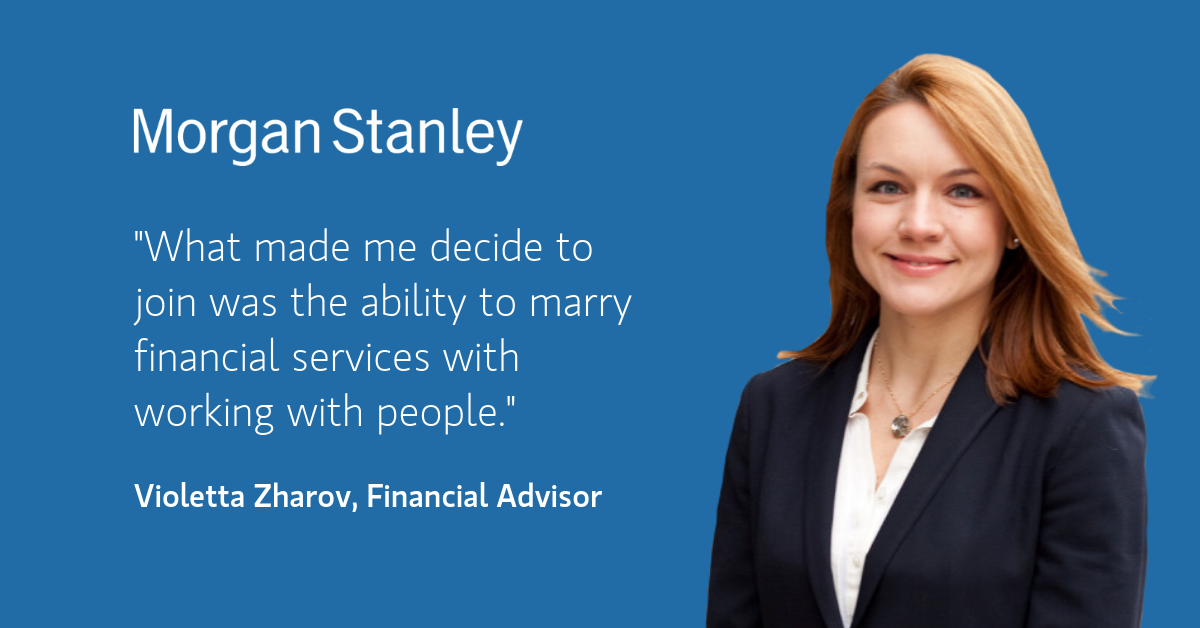What's the first thing that pops in your head when someone says they work in financial services? Maybe markets? Numbers… spreadsheets? Certainly not helping people, right? In reality, though, a drive and desire to put clients first is what makes for a great financial advisor.
For Violetta Zharov, it's also what made her decide to complete Morgan Stanley's rigorous two-year Wealth Advisor Associate and three-year Financial Advisor Associate programs. "What made me decide to join...was really the ability to be able to do those two things together... [To marry financial services] with working with people." She says this genuine desire to help people has also helped her win her clients' trust, "I think your clients know when you're in it for the right reasons."
Now a financial advisor, Violetta advises individuals on all aspects of their wealth, "from investments to tax and retirement planning, trust and estate strategies, insurance, etcetera."
Succeeding as a financial advisor requires a lot more than just knowing your way around a financial plan or a spreadsheet. You have to be a salesperson, analyst, customer service rep, and strategist all at once.
This level of responsibility might scare some people away, but that's just another reason Violetta joined the program and loves the work she does. Although building a book of clients as a new financial advisor is incredibly difficult, it's a challenge she finds rewarding.
You get to work independently and own your successes, while also having the support and resources of a huge corporation like Morgan Stanley behind you - so in a way, you get to experience the best of both worlds. In Violetta's words, "The program hasn't helped me grow my career. The program has allowed me to have a career."
Although being a financial advisor is inherently challenging, Violetta has found that helping others achieve their goals, all while managing her own schedule, performance, and objectives, has certainly made it worth it. And, if you bring your best each day, "You can count on the resources and support [of your] management team to be successful."
Sound like your kind of challenge? Check out the Wealth Advisor Associate and Financial Advisor Associate programs and apply today!
---
Morgan Stanley is an equal opportunity employer committed to diversifying its workforce (M/F/Disability/Vet).
Morgan Stanley Smith Barney LLC. Member SIPC.
CRC 2379060 (02/19)



